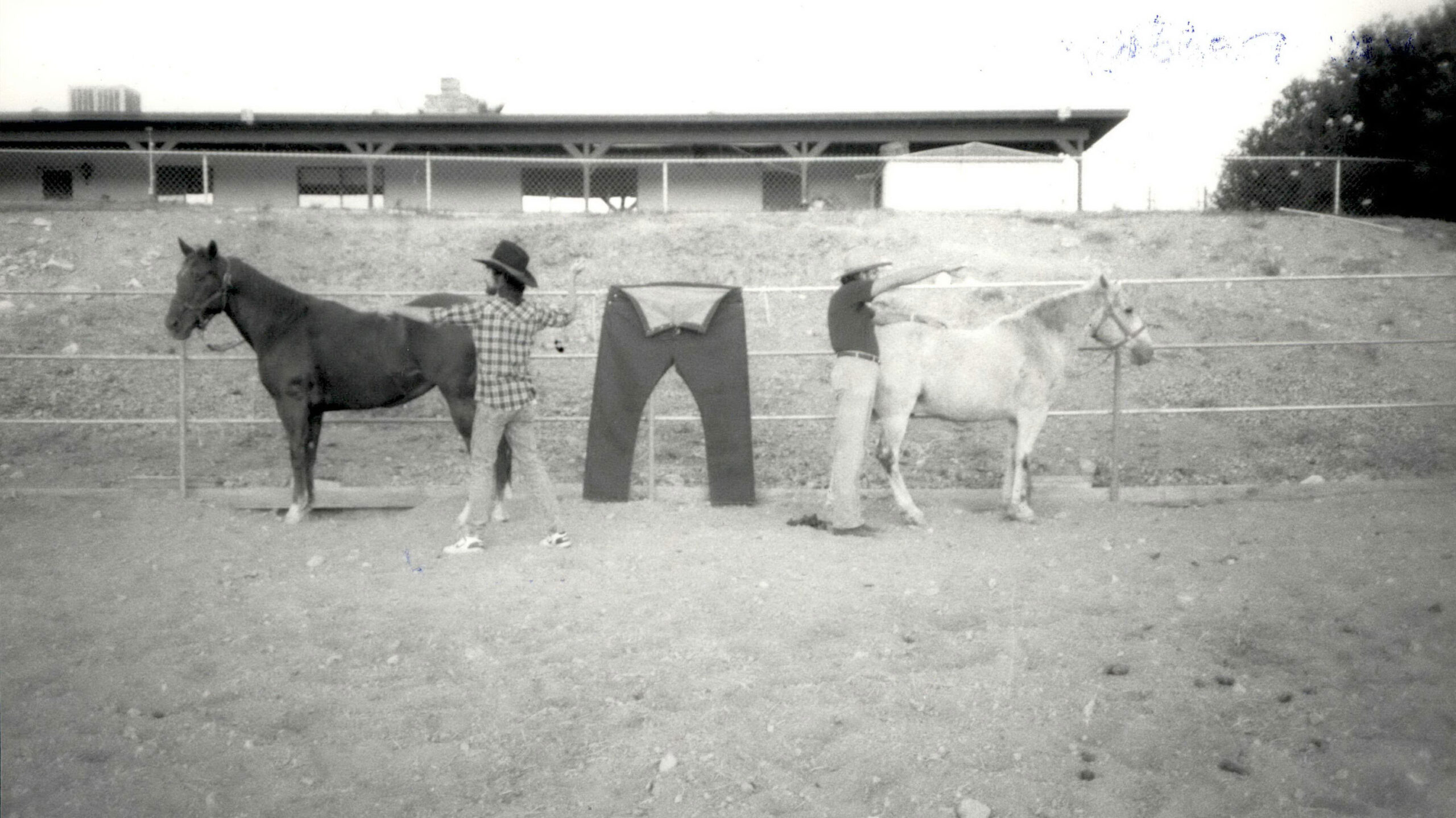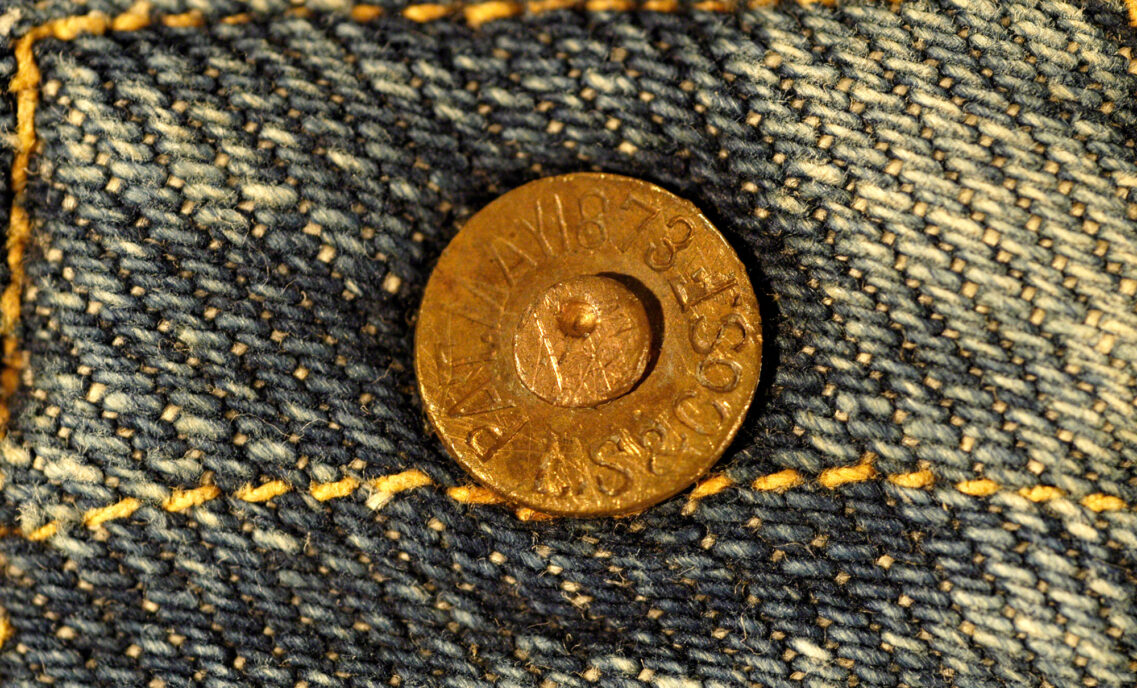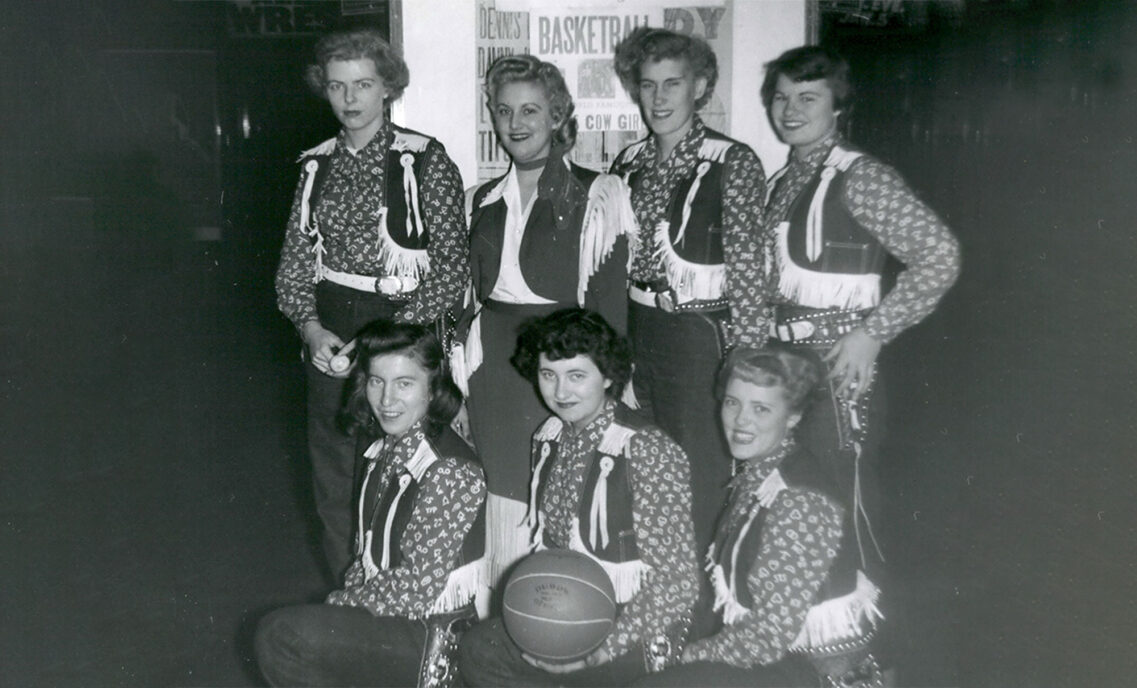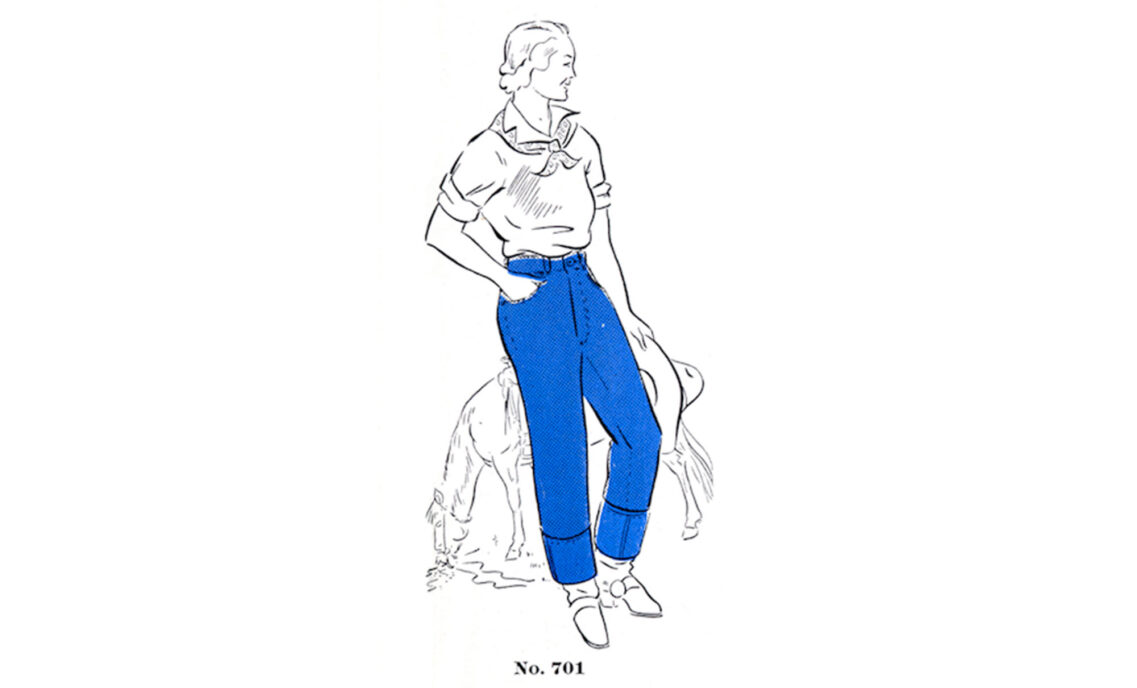When Levi Strauss & Co. and tailor Jacob Davis received a U.S. patent for “An Improvement in Fastening Pocket Openings” on May 20, 1873, the modern blue jean was born. The patent provided legal protection against competitors for almost 20 years, and by 1886, as the patent expiration neared, the company created an image to symbolize the quality and strength of its riveted overalls. Trademarked around the world, the image features a pair of Levi’s® overalls with a horse attached on each side of the waistband. The two horses face in opposite directions with a man standing next to each animal prepared to coax it forward. A simple tagline notes, “It’s no use. They simply can’t be ripped.”
Was the Two-Horse Pull a claim of truth, or a larger-than-life promise of quality? Here’s a recap of how the trademark was put to the test in real life reenactments over the years.
In 1942, a store owner in Hawaii set out to test our Two-Horse Pull on a pair of jeans. John Moodie, the manager of the Paia Store on Maui wrote to LS&Co., “Acting under your instructions on (e)nclosed circular, we hitched two Missouri mules to your pants, and zip.” He requested a refund for his torn Levi’s® jeans.
Two months later, Dick Cronin at Levi Strauss & Co. sent John a refund check “as a recognition of the faith and confidence you placed in the superior strength of our Levi’s®, displayed in your willingness to undertake the effort and labor of preparing the groundwork for such a test.”
Cronin continued, “We regret, though are not surprised, that the pants did not pass the test without the fatal ‘ZIP’ you mentioned. However, we understand from the many stories surrounding the Missouri mule that we are not the first to have come out second-best in a [tussle] with that animal.”
John wrote back in February 1943, returning the check with a note that the test was not fair. “Mules are stronger than horses,” he said, “and even at that, the Levi’s® came near winning. At the end of the [tussle], one of the mules dropped from exhaustion and expired a short time later.”
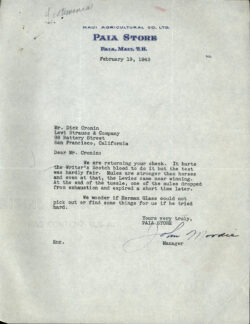
In 1989, the Two-Horse Pull was reenacted yet again in Henderson, Nevada. The participants sent a photo that we now have in the Archives of a dark colored horse and a white horse hitched to a pair of Levi’s® 501 jeans. We do not have a record of the outcome.
Across the globe, in 2021 and 2022, a group from Latvia tested Levi’s® jeans using Samogitian horses, which are a regional breed. The group gathered outdoors to great fanfare and recorded the event. Their goal? To recognize Latvian immigrant and inventor Jacob Davis, who partnered on the patent with Levi Strauss, and to celebrate their horses, known for strength and endurance over long distances.
The group proudly reported their findings and shared photos. “We ripped quite a few Levi’s® jeans,” reported Gintaras Kaltenis. Last year, Gintaras reported again, “This year organizers decided to do a wider test, first ripped the Levi’s® and then the Lee [jeans],” he wrote. “Test concluded — no jeans can survive our Samogitian-bred horses.”
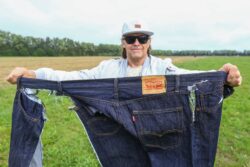
The group plans another test for 2023. “We are thinking to do all historic denim brands and time the break just to see which ones are definitely the strongest one,” he wrote.
Although the Latvian and Hawaiian tests left the Levi’s® jeans ripped, one pair of Levi’s® 501® jeans in our Archives survived a real-life test — albeit not with horses. In the 1930s, Mr. Schram of Burlingame, California, was driving his car when it stalled. All that he had in his trunk was a bit of rope and a pair of 501® jeans. Tying the rope to the jeans, he and a friend successfully towed the car back to the Schram home, and the jeans stayed intact.
Schram was so pleased with the result and the strength of the 501® jeans that he wrote a thank you letter to Levi Strauss & Co. that we still have in our Archives. He also packaged up the “Tow Rope Levi’s®” and mailed them to us for inspection.
True or not, the Two-Horse Pull remains a winner for its longevity. It is one of the most recognized symbols ever and remains one of the oldest continuously used trademarks in the world today. Now that’s a true test of endurance.



